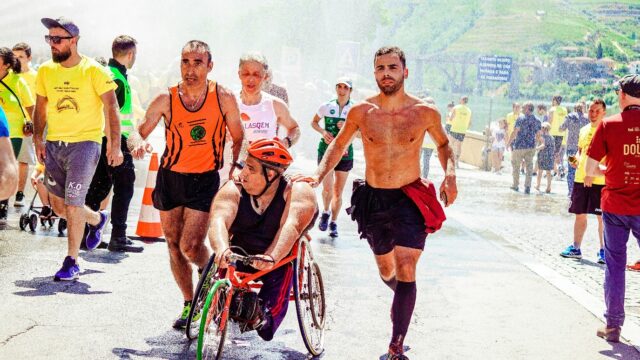Tip for – Physical Disability
TIPS DEPENDING ON THE DISABILITY
Physical Disability
For people with physical disability, they may need modifications to help play their sport. Ask them what would help them succeed before deciding for them.
Example: Like down syndrome, Cerebral Palsy can affect both physical and cognitive ability. Some common symptoms of CP are slow and withering movement, floppy/rigid limbs and intellectual disabilities.
Just because this is a severe disability that affects muscle function and strength, does not mean that you cannot be a successful athlete. As a child, athlete, Justin Gallegos was told he would never walk unassisted, due to his CP diagnosis and relied heavily on a walker and brace during school.
Justin ended up training constantly to run and ended up becoming the first athlete with CP to be sponsored by Nike – making him a professional athlete.

How to help: As CP affects the muscles, equipment can be modified to help somebody with CP. This includes lowering the ring height at basketball training, using a balloon instead of a ball, or reducing the amount of space used in a training drill. When regular athletes practice a skill, the better they get.
This also applies to people with a disability, and after some time, modifications can be removed or made more difficult to remain in line with the participant’s skill level.
Example: There has been a massive rise in the popularity of sports for people with a disability, which is continuing to grow.
One example of this is wheelchair tennis and the rise of Dylan Alcott. In 1992 the ITF’s Wheelchair Tennis Tour began with just 11 tournaments. Today there are over 160 tournaments in over 40 countries.
Through wheelchair tennis, Dylan Alcott has won Olympic gold medals, won the grand slam in tennis, won the Australiana of the Year Award and created the Dylan Alcott Foundation and won the Medal of the Order of Australia.
All of this wouldn’t have been able to happen if it wasn’t for inclusion in sport.
How to Help: Sport can be modified in some way to make it inclusive for everybody to participate. Not only do we have full wheelchair sports leagues (Basketball, Tennis, Rugby), but every sport can be modified for training and game play. Even soccer, which generally requires the most leg activation, has an indoor wheelchair soccer competition with bumpers on the bottom of the wheelchairs.

Think about how your training sessions could be changed to include somebody in a wheelchair.
